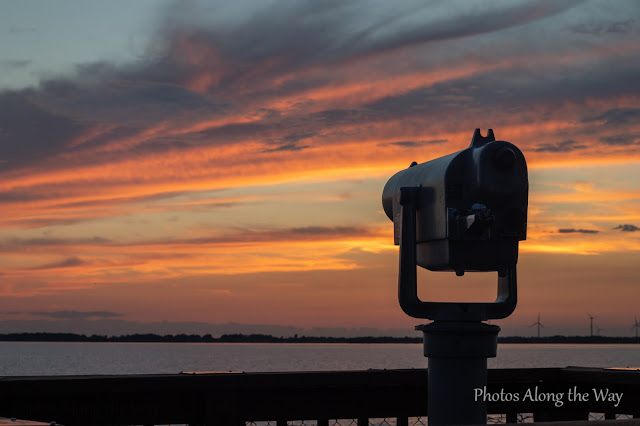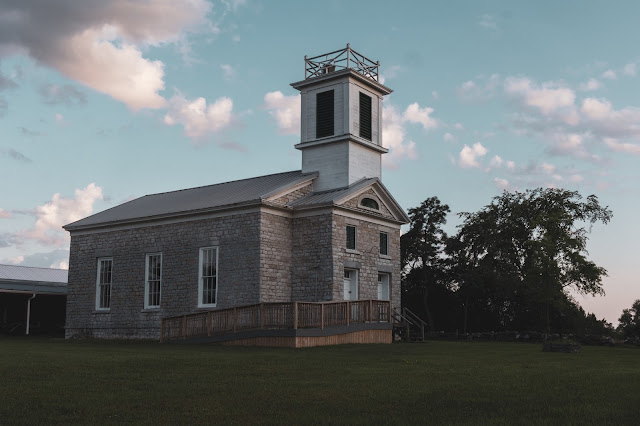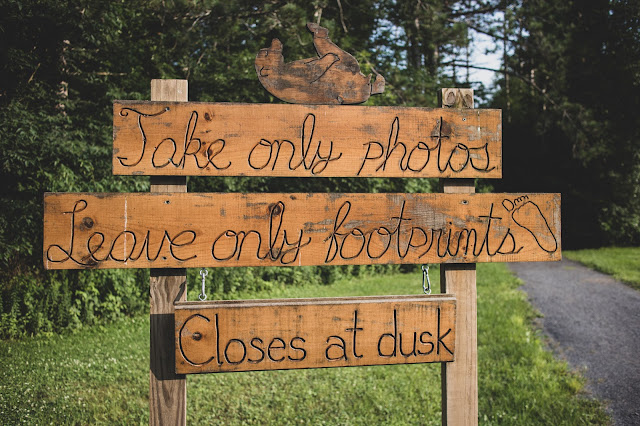How to find the BEST photo locations near YOU
We've all seen our favorite YouTube photographers trekking across exotic, and
beautiful locations, Reynisfjara Black sand beach in Iceland, Great mountain
scapes in Scotland or the Alps, or maybe interesting city scapes in New York
city, Tokyo, or Dubai, but what if you're just starting out, a hobbyist.
You've got a full time job and kids. you can't go running around the globe
spending your life savings visiting foreign countries to explore a hobby you
picked up 8 months ago! so how can you find fun and exciting locations to make
photos if you can't make it to Fiji this weekend? well I've got a few ideas.

|
The Technique
Whether you're a street photographer looking for hot spots downtown with interesting geometrical shapes, a landscape photographer looking for long distant views of the mountains, or a portrait photographer looking for interested, yet understated backgrounds for senior portraits the first step is the same.
My first tool of choice when ever looking for new photography locations is
Google Maps. although I've lived in the same general area for my entire adult
life I often find myself scrolling around on Google Maps as a reminder of the
surrounding area. I use it to search for public areas like parks, trails, open
air museums, anywhere I can go and won't get kicked out, but there's more to
it than just typing in "parks near me"
Typing in "parks" in a google maps search can result in any number of wide
ranging things, sure, you'll get your local parks but you might also get
"parkers garage" or "park st cleaners", so knowing the correct search terms
can often times net you a few more results.
For me, a landscape photographer, I use a few different search terms, parks
included. Nature preserve, hiking trails, museum, and even, fishing access are
all terms I've used to find locations for my photography. these are great
terms to find public areas that are either owned by the state, or an entity
who has made it publicly available for everyone.
Of course this isn't very useful if you're trying to get pictures of a
stranger with a brightly colored hat crossing the street during rush hour. So
if street photography is more your thing you may want to focus your search in
a tighter area, fortunately this gives you more search terms to look for.
Diners, Thrift stores, music stores, and even lawyers offices are all great
locations to hang around with a camera though that last one you may not want
to make yourself to obvious. locations like these are often heavily trafficked
in and out and usually offer a lot of character either outside or inside the
location.
Now that you've found a location lets take a minute to explore it, virtually.
Google Maps is riddled with photos, photo spheres, and street views so you can
save some time by ruling out certain locations before ever going there.
Clicking a location will bring up a whole array of information in the left
side panel, often times, including photos. These are photos usually shot on a
phone and submitted by helpful google users. You can use these photos to get
an idea of what the location looks like, and what features it has,
additionally reading through the reviews can be very helpful as well. There
have been times where I thought I found a great new waterfall, or an
interesting building only to read several reviews stating that its on private
property, or that the trail is currently closed due to trail conditions.
As great as user submitted photos and reviews can be, they can't give you a
360 degree view of the surroundings, that's where photo spheres and street
view come in handy. If you're a street photographer than street view is the
obvious choice when looking for new locations. By this point Google has driven
the vast majority of the developed world with the exception of the middle
east, and most of Germany for some reason, but if you're a street photographer
making photos of a business person hurriedly walking down a busy side walk,
we're going to assume you're already in or around a large populated city.
Clicking the little yellow figure in the bottom right of google maps will turn
every road with a street view to blue, then you can click anywhere there is a
blue road and it will bring you right into the action. This can also be
achieved by dragging the the little figure onto the location, but what if
you're a landscape or a portrait photographer looking for a great natural
setting? There are things here for you too.
Clicking the figure in the bottom right not only brings up all the roads with
street view, it also shows the location of all the photo spheres. little blue
circles, or dots littered across the map. These, however, can be a little more
difficult to spot amidst the mess of blue lines that make up the road system
so this may be a technique best used once you've already found a point of
interest, or if you feel like scrolling around at a fairly zoomed in view
looking for clusters of photo spheres in one place can sometimes be an
indication of a popular area with great scenery.
When to go
At this point you may very well have gathered enough information to make a
visit to your newly discovered location but if you're concerned about lighting
or when to go, there are a few tools we can use for that too.
The first and most easily accessible one I'm going to recommend is
suncalc.org. This is a very simple and
straight forward way of predicting where the sun will be and when. That
perfect spot for engagement photos you found might not be as good as you
thought once the sun has made its way into the western sky, or maybe you
really want a good sunrise photo over the lake and you need to know exactly
which end of the lake to go to. Placing the suncalc marker over your desired
location and using the slider at the top of the page to select different times
of day can show you exactly which direction the light will be coming from and
when.
What if you're strictly a mobile user? well there's an app designed
specifically around photography that, amongst the many things it can do, can
tell you exactly where the sun is going to be and when.
Photopills is a paid app available on both IOS and Android for around ten
bucks, and its sort of an "industry standard" when it comes to photography
tools.
Much like the suncalc website, you can see which direction the sun is going to
set and when on a map view, unlike the suncalc app you can also do what's
called AR mode. AR stands for Augmented Reality, it will use your phones
camera as a sort of view finder, a grid overlay will appear and will show you
exactly where the sun is, and will be, right before your eyes.
however this only works for the place you're currently standing in so if
you're looking for the best sunset locations 2 towns away, best to use the map
view.
Photopills is a very versatile app that can do so much more than just help you
track the sun, moon, stars, and the milky way. It also has features for
calculating Depth of Field, hyper focal distance, time lapses and more. In my
opinion well worth the 10 bucks.
Well all that is just fine for finding bright sunny locations, but what if you
get to your new favorite spot only to discover the sun has been completely
blocked out by the clouds, or maybe you were hoping for rain and got sunshine.
either way, you're going to need a way to predict the weather.
Meteorology doesn't seem to be an exact science. Even the professionals aren't
correct 100% of the time. For me, the most tried and true technique of weather
prediction is to pop my head out the window and take a look, which is great
for where you're standing, but what if you want to drive an hour north? Well
the most obvious thing would be to check your weather app, and that should
give you a good idea of what to expect, but wouldn't it be great if you could
SEE the conditions there? sometimes there's a way. Depending on what
kind of location you're headed to there may be a chance of a live weather cam
somewhere in the area, it may not be in the exact spot you're looking to
visit, but it gets you a little closer before even climbing in the car.
I use 2 techniques to find live weather cams. the first and most obvious one
is YouTube. lets say I wanted to go for a hike up Bald Mountain just outside
of Old Forge, NY. I'd search "Old forge ny live" on YouTube. naturally this
should bring up any streams currently live in old forge, but that's not always
the case. to assure that you've got every possible live camera you can click
the "filters" button found in the upper left hand side of the YouTube website,
then under the "features" section you will see the word "live" this will
filter out only live streams for you to view.
Not every weather cam is on YouTube though, that's where the second technique
comes into play, and its just as simple. Just google it. weather websites,
local news channels and even hotels may have live webcams in the area that
can't be found on YouTube. filtering out the webpages you're not interested in
isn't really an option though, so it may take a little more digging to find a
webcam that gets you a live view of where you're going.
I hope this post has given you some ideas and inspired you to search out new
and exiting locations. I'd love to hear suggestions from you, and how you find
your favorite photo locations.






Comments
Post a Comment